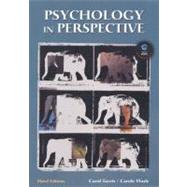
CAROL TAVRIS earned her Ph.D. in the social psychology program at the University of Michigan, and as a writer and lecturer she has sought to educate the public about the importance of critical and scientific thinking in psychology. She is author of The Mismeasure of Woman; Anger: The Misunderstood Emotion; and, with Carole Wade, Psycholoy; Invitation to Psychology; and The Longest War: Sex Differences in Perspective. She has written on psychological topics for a wide variety of magazines and professional publications; many of her opinion essays and book reviews for The Los Angeles Times, The New York Times Book Review, Scientific American, and other publications have recently been collected in Psychobabble and Biobunk: Using Psychology to Think Critically About Issues in the News. Dr. Tavris lectures widely on, among other topics, critical thinking, pseudoscience in psychology and psychiatry, anger, and the science and politics of research on gender. She has taught in the psychology department at UCLA and at the Human Relations Center of the New School for Social Research in New York. She is a Fellow of the American Psychological Association and a charter Fellow of the American Psychological Society; a member of the board of the Council for Scientific Clinical Psychology and Psychiatry; and a member of the editorial board of the APS's Psychological Science in the Public Interest. When she is not writing or lecturing, she can be found walking the trails of the Hollywood Hills with her border collie, Sophie.
CAROLE WADE earned her Ph.D. in cognitive psychology at Stanford University. She began her academic career at the University of New Mexico, where she taught course in psycholinguistics and developed the first course at the university on the psychology of gender. She was a professor of psychology for ten years at San Diego Mesa College, then taught at the College of Marin, and is now affiliated with Dominican University of California. She is author, with Carol Tavris, of Psychology, Invitation to Psychology, and The Longest War: Sex Differences in Perspective. Dr. Wade has a long-standing interest in making psychology accessible to students and the general public through lectures, workshops, and general interest articles. For many years she has focused her efforts on the teaching and promotion of critical-thinking skills, diversity issues, and the enhancement of undergraduate education in psychology. She chaired the APA Board of Educational Affairs Task Force on Diversity Issues at the Precollege and Undergraduate Levels of Education in Psychology, is a past chair of the APA's Public Information Committee, has been a G. Stanley Hall Lecturer, and currently serves on the steering committee for the National Institute on the Teaching of Psychology. Dr. Wade is a Fellow of the American Psychological Association and a charter member of the American Psychological Society. When she isn't busy with her professional activities, she can be found rising the trails of northern California on her Arabian horse, Condé.
| To the Instructor | xv | ||||
| To the Student | xxiii | ||||
| About the Authors | xxv | ||||
| PART I Invitation to Psychology | 3 | (70) | |||
|
4 | (31) | |||
|
35 | (38) | |||
| PART II The Biological Perspective | 73 | (108) | |||
|
74 | (43) | |||
|
117 | (64) | |||
|
168 | (13) | |||
| PART III THe Learning Perspective | 181 | (84) | |||
|
182 | (37) | |||
|
219 | (46) | |||
|
253 | (12) | |||
| PART IV The Cognitive Perspective | 265 | (94) | |||
|
266 | (38) | |||
|
304 | (55) | |||
|
348 | (11) | |||
| PART V The Sociocultural Perspective | 359 | (90) | |||
|
360 | (36) | |||
|
396 | (53) | |||
|
437 | (12) | |||
| PART VI The Psychodynamic Perspective | 449 | (42) | |||
|
450 | (41) | |||
|
477 | (14) | |||
| PART VII Putting the Perspective Together | 491 | (58) | |||
|
492 | (57) | |||
|
538 | (11) | |||
| Glossary | 549 | (14) | |||
| Bibliography | 563 | (40) | |||
| Credits | 603 | (2) | |||
| Name Index | 605 | (14) | |||
| Subject Index | 619 |
The New copy of this book will include any supplemental materials advertised. Please check the title of the book to determine if it should include any access cards, study guides, lab manuals, CDs, etc.
The Used, Rental and eBook copies of this book are not guaranteed to include any supplemental materials. Typically, only the book itself is included. This is true even if the title states it includes any access cards, study guides, lab manuals, CDs, etc.